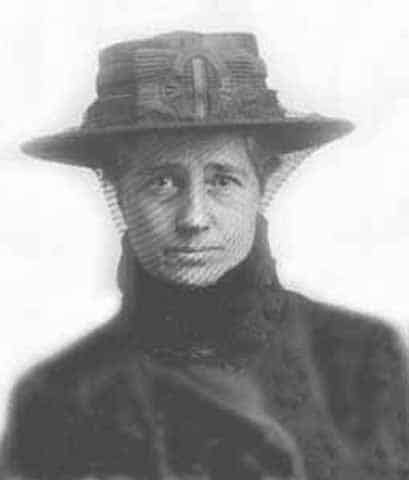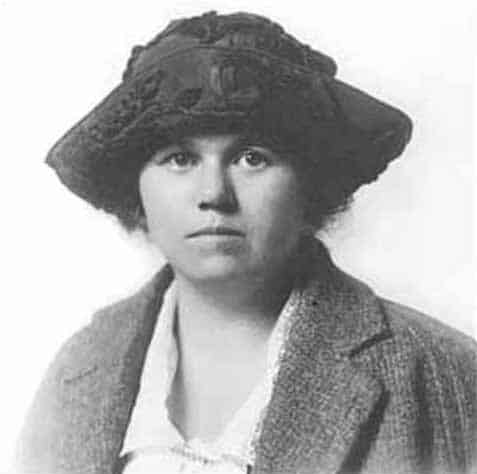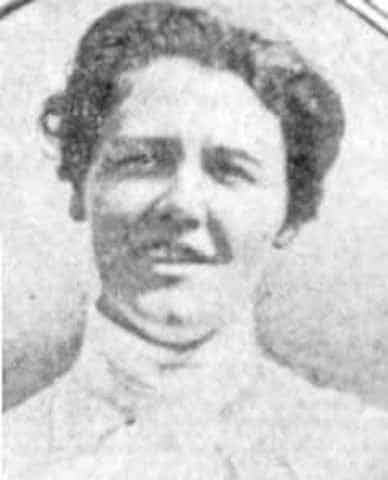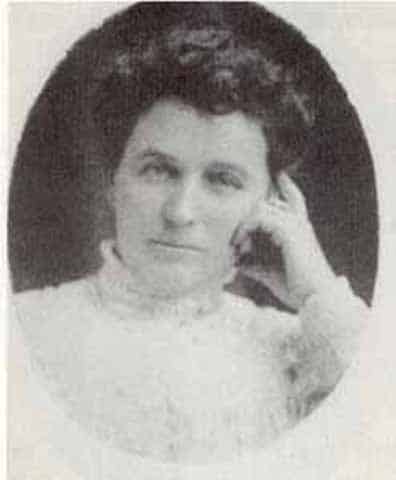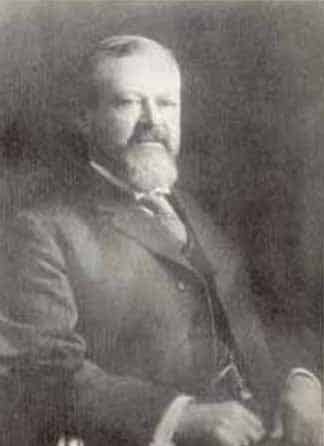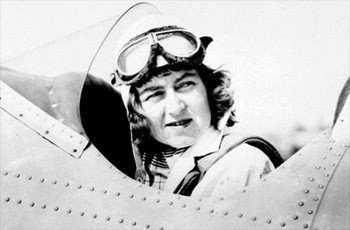The world had never seen a luxury liner like the Titanic. She was packed to capacity with travelers of all types, including Missourians like St. Louis’ wealthy John Jacob Astor. None suspected the fateful turn their trip would take on April 15, 1912.
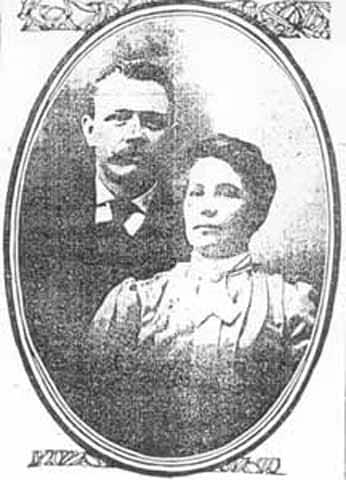
By Phillip A. Gowan
The movement occurring all around her was like an evil kaleidoscope in black and white. In the frigid cold of the North Atlantic Ocean, there was frenzied movement everywhere. In the midst of it, a young mother named Selma Asplund tried to comfort her five-year-old daughter Lillian to silence the child’s sobs. A younger child named Felix clung to her tightly in bewilderment. But these two children were not her primary concern at that moment. As her lifeboat lowered farther and farther from the boat deck of the RMS Titanic toward the black water below, her focus was on what had been left behind. Above her at an ever-lengthening distance and silhouetted against the lights of the great ship and the night beyond, four terrified faces peered down into the lifeboat. There were still empty seats in the lifeboat, but it had begun to lower before Selma’s husband and three older sons had a chance to enter. Looking up at them, she could barely make out their features — only their ghostly forms. That was the last vision of her husband and sons — a vision that would haunt her for the rest of her life.
In early 1893, a young Swedish girl named Selma Johansson left her home in Smaland, Sweden, and set out to make a new life near relatives who had settled in Kansas City. She was not quite twenty years old, and the promise of a prosperous future in the American Midwest had been tantalizing. Perhaps there was a husband and family in her future. Maybe someday grandchildren would sit on her lap. There was nothing but promise beyond. But things did not work out in Kansas City, and Selma never felt at home. America was so different from Sweden, and adjustment didn’t come easily. When relatives invited her to join them in Worcester, Massachusetts, she decided to move. There was a large Swedish population there, and she could gradually blend into America while keeping the familiarity shared by people with similar backgrounds. In 1896, she met the man of her dreams, Carl Asplund, whom she married that same year. Five children were born to them in Massachusetts, though one died in infancy. The last two children were twins, Lillian and Carl Edgar, born in October 1906.
Not long after the birth of the twins, Carl Asplund decided to return to their native Sweden, and the entire family left for the town of Alseda. While in Sweden, Selma gave birth to her last child, a son named Felix. But Carl had trouble finding work, and by the end of 1911, the family began to make plans to return to Massachusetts. In April, the family made its way to Southampton, England, and boarded the new luxury liner Titanic as steerage passengers. It would be Carl Asplund’s sixth trip across the Atlantic.
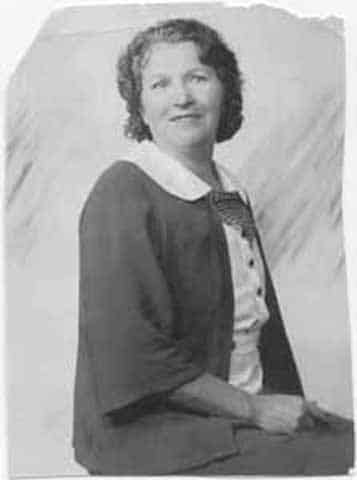
Prior to sailing on the Titanic, a young Irish colleen named Bridget Delia McDermott was nervous about the trip. She was on her way to the home of her cousin, Maria Finnerty of St. Louis, and hoped to find work as a domestic servant with a wealthy family in Missouri. She was thirty-one years old and still unmarried. Born in Lahardane, County Mayo, Ireland, Bridget was like so many other young, Irish women of the day and knew she might never see her family again once she left for America.
Bridget traveled to the nearby town of Crossmolina, where she purchased new clothing for her trip. She was especially proud of a fine new hat she bought; she wore it almost every day, even before departure. In early April, she joined a group of fourteen people who departed the town of Addergoole for Queenstown where they would join the maiden voyage of the great ship everyone was talking about. It would be the adventure of a lifetime. But her excitement was tempered by something that happened the evening before she left her hometown. She was out with friends when a strange, unknown man tapped her on the shoulder. Assuming that he was also traveling and in need of money, she started to give him a few pennies. Then the man told her he knew she was going on a long journey and that there would be a tragedy. After that, the man seemed to simply vanish. When she mentioned the incident to others nearby, they claimed not to have seen the little man.
Bridget Delia McDermott was not the only passenger bound for St. Louis. Far removed from the steerage passengers, three wealthy women from Missouri were set to enjoy all the luxuries of traveling first class. Elisabeth Walton Robert was a forty-three-year-old widow traveling with her teenage daughter, Georgette Alexandra Madill, and her niece, Elisabeth Walton Allen. The women descended from influential families in Pennsylvania, which had settled in St. Louis and prospered.
As a twenty-six year old, Elisabeth had married a much older man, a prominent fifty-six-year-old judge named George Alexander Madill. In early 1896, she gave birth to their only child, Georgette. Although Judge Madill died in 1901, the women were left financially secure, and five-year-old Georgette would receive an allowance of $7,500 a year for clothing and spending money.
After the death of Judge Madill, Elisabeth married again, to Virginia native Edward Scott Robert who, ironically, had been a pallbearer at the funeral of Judge Madill. This marriage ended with his death in 1911. Still bereaved in early 1912, Elisabeth and Georgette made a trip to England accompanied by her niece, who had become engaged to an Englishman. Elisabeth Allen was the daughter of the vice presi- dent and treasurer of the East St. Louis Locomotive and Machine Shop Company. She had graduated from Vassar in 1904 and had traveled extensively in Europe. After an enjoyable visit to England and ready to return to St. Louis, the three women booked pas- sage on the maiden voyage of Titanic along with Mrs. Robert’s German maid, Emilie Kreuchen. Emilie occupied a cabin forward on E-Deck away from the three wealthy women.
Clara Jennings Gregg was a native of St. Louis and had married Charles M. Hays, president of the Grand Trunk Railway in Canada. They were wealthy and prominent residents of Montreal, and Charles had high hopes of overseeing the building of a second transcontinental railway across Canada. But the company had found itself in bankruptcy, and financing for the project was in jeopardy. So in 1912, Clara and Charles traveled to England along with their daughter and son-in-law, Orian and Thornton Davidson, and maid Mary Anne Perreault. Also accompanying them was a young man named Vivian Ponsonby Payne. Vivian’s father had been a friend of Charles, and after Vivian’s father died, Charles considered himself to be a surrogate father to Vivian. Charles intended to convince company board members in Britain that they could spend their way out of bankruptcy by several methods, including the building of a number of luxury hotels across Canada. He enjoyed being among titled Englishmen, and the family had an enjoyable visit to England though Charles had some stomach trouble when they first arrived. But after a month, they received word that one of their four daughters was having a difficult pregnancy and faced a Caesarian delivery, and they decided to return home sooner than planned. They boarded the Titanic at Southampton as first-class passengers and were guests of White Star’s managing director, J. Bruce Ismay.
Another St. Louis resident, thirty-five-year-old Spencer Victor Silverthorne, also boarded Titanic as a first-class passenger. He was a native of Komoka, Ontario, but his family had lived in Greenville, Michigan, when he was growing up. In 1912, he was a buyer for Nugent’s Department Store in St. Louis and had traveled to Europe in that capacity. He also boarded the Titanic at Southampton, England, and shared a cabin on E-Deck with another buyer, Edward P. Calderhead. Spencer’s wife’s health had become fragile, and he was anxious to get back to St. Louis to be with her.
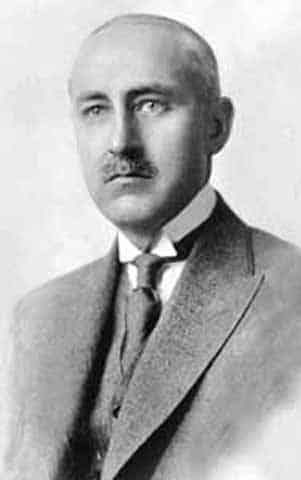
There was yet another first-class passenger on Titanic with Missouri roots. Margaret Tobin Brown (later to be known as “The Unsinkable Molly Brown”) was born to a poor Irish couple in Hannibal. As a young woman, she had gone to Leadville, Colorado, and married “Leadville Johnny” Brown. When Johnny made a fortune in the silver and gold mines, Margaret’s life changed forever. Despite her humble beginnings, she mastered several foreign languages, immersed herself in the cultural life of Denver, and began to travel the world, often hobnobbing with the elite of New York society. In Hawaii, she learned to play the ukulele. In Palm Beach, she learned the latest dances.
In Switzerland, she learned to yodel. In a flaming Florida hotel, she rescued other guests. In Paris, she was named a Knight of the Legion of Honor. She founded a museum for schoolchildren in Denver, and she helped to create a Mark Twain memorial in Missouri.
The Browns were parents of a son and daughter, and the family bought a fine home in Denver where Margaret attempted to become a part of the local society. Seen by some as less than polished, she met with some derision and exclusion there. In 1911, she traveled to Europe and also was in Egypt with newlyweds John and Madeleine Astor. In April 1912, she received word that her first grandchild was seriously ill and immediately made plans to return to America, boarding the Titanic as a first-class passenger.
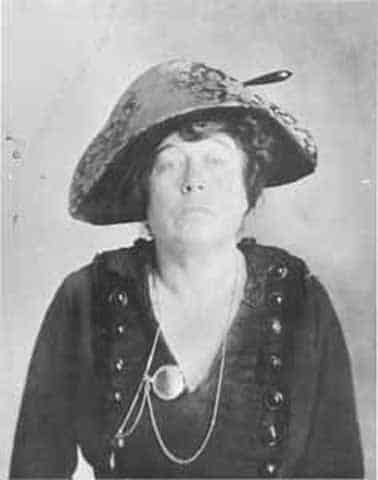
The RMS Titanic sailed away from Queenstown, Ireland, on Thursday, April 11, 1912. For the 2,208 souls on board, thoughts turned to activities on the ship and anticipation of arrival in New York. Whether traveling first class or steerage, passengers found much to see and discover on the great leviathan. Friendships were made, and meals were enjoyed. The very wealthy and the poorest of the poor shared a common destination. None of them realized that destination was a deadly iceberg.
On Sunday, April 14, 1912, various religious services were held in the different classes. By afternoon, the weather had become significantly colder, and some later claimed that they could smell ice in the air. There was a glorious sunset before night fell. Few people chose to go on deck due to the cold. By the approach of midnight, many had retired to their staterooms. Others were still enjoying the companionship of friends in the public areas. A raucous dance was held in steerage that many would later recall as a fond memory.
The Missourians on board Titanic found themselves in various places when destiny approached at 11:40 pm. St. Louis passenger Spencer Silverthorne was enjoying a cigar in the first-class smoking room while reading The Virginian by Owen Wister. When the collision with the iceberg occurred, he imagined that the ship might have hit a whale or even another ship, and he went out to investigate. He saw a giant iceberg passing; chunks of it were falling onto the deck. He returned to the smoking room where several men were engaged in a bridge whist. Just as the card game was about to resume, an officer ordered the men on deck. Most of the passengers had no reason to fear that the ship was in peril, and the warmth and comfort on board seemed far more appealing than a lifeboat on the frigid waters of the North Atlantic. Fortunately for Silverthorne and several other men in first class, when they arrived on deck, Lifeboat Number 5 was about to be lowered, and there was plenty of room for them. Men who had been in their cabins and suites would not be so lucky.
Railroad baron Charles Hays and his entourage had been made aware that something was wrong, and all made their way to the boat deck. Charles, his son-in-law, and Vivian Payne stood on the deck as they watched a lifeboat lower with Clara Hays and Orian Davidson. The women had been assured that the launching of the lifeboats was only a precaution and that, even if there was a genuine risk, another ship loomed off in the distance and would surely come to their rescue.
On E-Deck, maid Emilie Kreuchen heard a commotion near her cabin and then noticed that the carpet was soaked. She quickly knocked on the cabin door of Elisabeth Walton Allen, who was a bit annoyed. It was very late, and she wondered what prompted the German woman to disturb her at such an hour. Emilie told her that the baggage room of Titanic had flooded. Unconvinced that there was anything to be troubled about, Miss Allen advised the maid to return to her own cabin. After all, there were watertight compartments on this ship — the greatest ocean liner in the world — and there could not possibly be anything to worry about.
But within a few minutes, Emilie was again at the door exclaiming that her own cabin was flooded and that she could not return to it. The reaction then was swift and lifesaving. Emilie and Elisabeth rounded up Elisabeth’s aunt Elisabeth and cousin Georgette. The four women quickly made their way to Titanic’s boat deck and were ordered into Lifeboat Number 2. The lifeboat was under the command of Fourth Officer Joseph Groves Boxhall.
Margaret Brown busied herself in assisting other passengers into lifeboats, taking little or no concern for her own safety. Finally a crewman practically threw her into one of them. Well after midnight, when the lifeboats began to fill, Quartermaster Robert Hichens was assigned to Lifeboat Number 6, and a group of more than two-dozen women from an assortment of backgrounds were to find salvation there. Among them was Margaret. The unlikely pairing of the rich and feisty Irish-American woman and the cantankerous Cornish man would soon become legend.
During the night, Hichens taunted the wealthy women to a breaking point. Finally, Margaret threatened to throw him overboard and then organized the women in the rowing of the lifeboat. Her heroism during those hours earned her an enduring legendary status and sobriquet of “The Unsinkable Molly Brown.”
Steerage passengers didn’t have as much success finding a place in a lifeboat. Bridget Delia McDermott was sleeping when the collision occurred and felt nothing. It was only when a steward alerted her to get up and get dressed that she realized something was gravely wrong. Although she managed to quickly make her way to the boat deck, she remembered the lovely new hat she had bought just days before in Ireland and returned, perhaps foolishly, to her cabin to retrieve it. She recalled later that she had witnessed other steerage passengers being prevented from entering the companionways and going on deck. Although most in her group from County Mayo were not so lucky, Bridget jumped from a rope ladder and into a lifeboat with her hat safely in tow.
A steward also informed Carl Asplund that he should gather his family and go to the boat deck. He stuffed his pockets with the family valuables and the seven steerage tickets they held. When they arrived on A-Deck, Lifeboat Number 4 was about to launch, and Selma entered it with baby Felix in her arms. Little five-year-old Lillian was handed down quickly, but no other family member was to follow. Lillian’s last memory of her twin brother was like her mother’s — a vague silhouette looking down into her lifeboat from above.
Through the long, cold, and miserable hours, those fortunate enough to find a place in a lifeboat fought the chill and held out hope that those left behind might have found another lifeboat. Many of them watched the terrifying breakup of the ship and then witnessed the “greatest ship ever built” sink below the surface of the water. The ocean was perfectly still, and millions of stars seemed to dot the sky.
Some lifeboats tried to row toward a mysterious light in the distance that was thought to be another ship. Women helped in the rowing in an effort to keep warm. Mothers tried to comfort their children. With dawn came a scene that seemed surreal to the survivors. As far as the eye could see, there were stunningly beautiful icebergs. The irony was not lost on them that something so beautiful had just caused one of the worst disasters in maritime history. One survivor would later comment that the stunning sight of the endless field of icebergs still vividly existed in his mind’s eye fifty years later.
For those in the lifeboats, the Cunard ship Carpathia was to bring salvation to a fortunate 712 people. As it arrived on the scene, the lifeboats began to make their way toward the ship and were then hoisted aboard. The first feet to step on the deck of the rescue ship were those of Elisabeth W. Allen of St. Louis. All the survivors were accommodated as well as possible until their arrival in New York City on April 18, 1912. Then, they went their separate ways to resume life as best as they could.
Bridget Delia McDermott settled in New Jersey instead of Missouri. She married John Joseph Lynch and had three children. She lived a happy life in Jersey City and died there in 1959.
Clara Hays and her daughter Orian Davidson were widows afterward. They returned to Montreal and tried to put their lives back in order. Clara died in 1955, well into her mid-nineties. Orian Hays Davidson remarried in 1924 to Robert N. Hickson. She died in 1979 at the age of ninety-four.
Spencer Victor Silverthorne returned to St. Louis. His wife died the next year, and he later remarried and had two children. Eventually settling in Scarsdale, New York, he died in 1964 at the age of eighty-seven.
Maid Emilie Kreuchen returned to Germany but decided to come to the United States permanently in 1916. She married Wimar Wurm and lived in the San Francisco area until her death in 1971 at the age of eighty-eight.
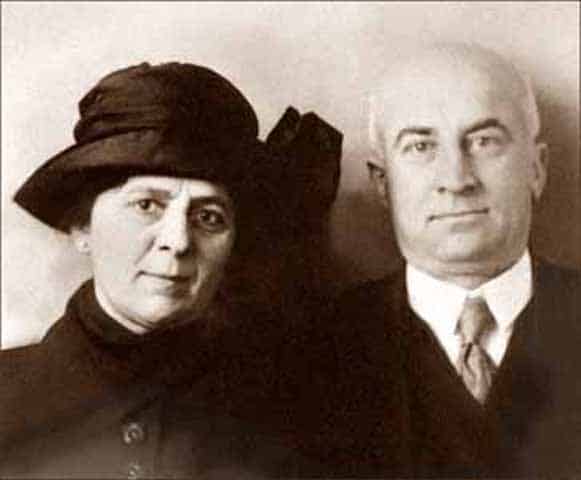
Elisabeth Walton Allen, Elisabeth Robert, and Georgette Madill made their way back to St. Louis. Miss Allen returned to England within a few months and, in a double-wedding ceremony with her sister, married Dr. James Beaver Mennell on July 11, 1912. They raised three sons in Tunbridge Wells, England. Elisabeth died there in 1967 at the age of eighty-five.
Elisabeth Robert lived out her life in St. Louis and died in 1956 at the age of eighty-seven. She was buried in the family plot in Bellefontaine Cemetery. Defying the social mores of the day, she personally saw to it that when the three black maids she employed passed away that they were also buried in the family plot.
Georgette Madill led an interesting life after Titanic. She lived in England for a number of years, and when she was thirty-five, she married Don Antonio Bagshawe Mattei in London. He was a barrister and descended from Maltese royalty. They had no children but lived a socially active life. Always overweight, Georgette and her husband, who was pencil thin, were said to cut a comical sight when they were in public. She died in Westminster, England, in 1974 at the age of seventy-seven.

Molly Brown was also rescued by the Carpathia and seemed to suffer few ill effects from her ordeal. She lived alternately in Denver and New York and continued to travel the world and enjoy life. But as the years passed, she became more and more eccentric and was estranged from her husband and children. In October 1932, she died in her room in New York’s Barbizon Hotel after suffering a stroke.
In the early days Selma Asplund spent in Kansas City, she dreamed of a good life, a husband, and children. An iceberg in the North Atlantic Ocean was to rob her of her dreams just as they were being realized. Her husband’s body was recovered, but the bodies of her three little boys were never found. She and her two surviving children returned to Worcester, Massachusetts, to be near her two sisters and other relatives. Devastated by the loss of a husband and three sons, she refused to discuss the subject of the Titanic sinking and admonished her son and daughter that it was not prudent to talk about such tragedies. Selma and her two children moved to the town of Shrewsbury, Massachusetts, in the 1950s. The anniversary of the sinking on April 15 was always difficult for her, and in an odd twist of fate, Selma herself died on the fifty-second anniversary of the disaster in 1964 at the age of ninety. Her only survivors were Felix and Lillian, neither of whom had married or had children.
On May 6, 2006, ninety-nine-year-old Lillian Asplund died in her home in Shrewsbury, Massachusetts. Quiet and reclusive, she had never granted an interview about her experience as a five-year-old on Titanic, honoring her mother’s wishes to remain silent on the subject. News of her death was reported in newspapers all over the world. Lillian Asplund was the last survivor of the Titanic with ties to Missouri through her mother, who had lived in Kansas City, and the last American survivor.
With four hundred artifacts plus replicas, the Titanic Museum in Branson gives visitors a close-up of the Titanic and the lives of those who boarded and sank with her. Guests get a feel for what it was like to be aboard one of the most luxurious ocean liners of all time. For information, visit www.titanicbranson.com.
Article originally published in the October 2006 issue of Missouri Life.
Related Posts
Missourians Survive the Y2K Scare
On January 1, 2000, Missourians survived the Y2K (Year 2000) scare. Millions of anxious people around the state waited to see if electronics would shut down at the stroke of midnight on January 1, 2000.
Missourians Survive Y2K Scare
On January 1, 2000, Missourians survived the Y2K (Year 2000) scare. Millions of anxious people around the state waited to see if electronics would shut down at the stroke of midnight on January 1, 2000.
May 3, 1930
Laura Ingalls became the first licensed woman pilot in St. Louis.

